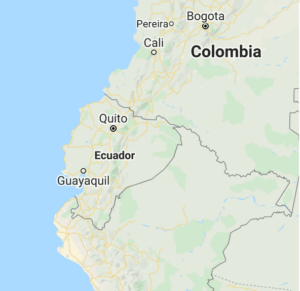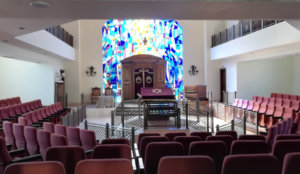 The history of Jews in Ecuador dates back to the colonial period, with the first Sephardic Jews probably arriving in what is now Southern Ecuador escaping the inquisition in the Viceroyalty of Lima between the late 16th and early 17th centuries. This presence of Sephardic Jews remained hidden for years in Ecuador and Judaism was only practiced secretly at home.
The history of Jews in Ecuador dates back to the colonial period, with the first Sephardic Jews probably arriving in what is now Southern Ecuador escaping the inquisition in the Viceroyalty of Lima between the late 16th and early 17th centuries. This presence of Sephardic Jews remained hidden for years in Ecuador and Judaism was only practiced secretly at home.
In 1904 there were only four Jewish families in the country, and a survey in 1917 indicated the presence of 14 Jews. After 1924, when the United States established its immigration quota system, a handful more arrived in Ecuador. Yet, only in the wake of the rise of Nazism and the ensuing Holocaust in Europe did the Jewish mass immigration to Ecuador began. During the years 1933-43 about 2,700 Jews arrived, and by 1945 there were 3,000 new Jewish immigrants, 85% of whom were refugees from Europe.
 In the early years of World War II, Ecuador still admitted a certain amount of immigrants, and in 1939, when several South American countries refused to accept the 165 Jewish refugees from Germany aboard the ship “Koenigstein,” Ecuador granted them entry permits. Nevertheless, the country eventually gave way to a policy of selectivity.
In the early years of World War II, Ecuador still admitted a certain amount of immigrants, and in 1939, when several South American countries refused to accept the 165 Jewish refugees from Germany aboard the ship “Koenigstein,” Ecuador granted them entry permits. Nevertheless, the country eventually gave way to a policy of selectivity.
In 1941, Dr. Manuel Antonio Munoz Borrero Consul to Stockholm, with the assistance of the Chilean Consulate, sent some 80 passports to Istanbul for distribution to Polish Jews. He was fired in January 1942. The Swedes did not confiscate the consulate archives, so the seals and documents remained in Munoz Borrero’s possession. Later, Jewish leaders in Sweden, approached Dr. Munoz Borrero requesting that he issue passports to Jews in occupied Europe so that they could be protected from deportation to the death camps. Dr. Munoz Borrero agreed, despite being forbidden to use any consulate-related papers or equipment.
 At its peak, in 1950, the Jewish population of Ecuador was estimated at 4,000, the majority living in Quito, several hundred in Guayaquil, and several scores in Ambato, Riobamba, and Cuenca.
At its peak, in 1950, the Jewish population of Ecuador was estimated at 4,000, the majority living in Quito, several hundred in Guayaquil, and several scores in Ambato, Riobamba, and Cuenca.
Ecuador’s capital city is home to only about 700 Jews. However, the Jewish Community Centre of Ecuador has a two-storey synagogue, complete with several exquisite stained-glass windows, and enough space to accommodate about 400. In addition to the synagogue, the Community has a mikvah, squash and tennis courts, a large indoor swimming pool, a youth centre and its own soccer field. There is an on-site kosher kitchen and cafeteria.
The Jewish school, Colegio Experimental Alberto Einstein, was established in 1973. It serves both Jewish and non-Jewish students from kindergarten through the twelfth grade.